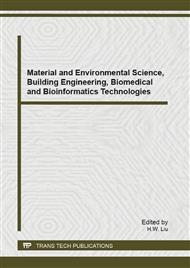p.669
p.673
p.677
p.682
p.686
p.690
p.697
p.703
p.707
Experimental and Numerical Study on the Suppression of Pool Fire with Water Mist
Abstract:
The objective of this work is to investigate the diesel analog pool fire with water mist .For this purpose, a series of water mist fire suppression experiment are carried out by changing the nozzle operating pressure, the source of fire power, opening and closing the exhaust fan to analyze the inhibitory effect of water mist to oil pool fire in the enclosed compartment of 5.0m × 5.0m × 3.0m. The results shows that extinguishing efficiency first increases and then decreases when the nozzle operating pressure increases from 8MPa to 12MPa, reaching the highest efficiency at 10MPa; increasing the power of the source of fire, the burning speed increases and the water mist fire extinguishing efficiency decreases; fresh oxygen coming in when smoke exhaust fan is turned on and water mist fire suppression efficiency decreases. Using FDS to simulate the water mist extinguishing oil pool fire, the predict temperature field and extinguishing time are basically consistent with the experimental results. In the actual applications of water mist fire suppression systems engineering, we can use the FDS field simulation methods to predict the characteristic parameters variation of the fire fighting fire temperature and component concentration, which is significant to the fire extinguishing system optimized design.
Info:
Periodical:
Pages:
686-689
Citation:
Online since:
September 2013
Authors:
Keywords:
Price:
Сopyright:
© 2013 Trans Tech Publications Ltd. All Rights Reserved
Share:
Citation:


